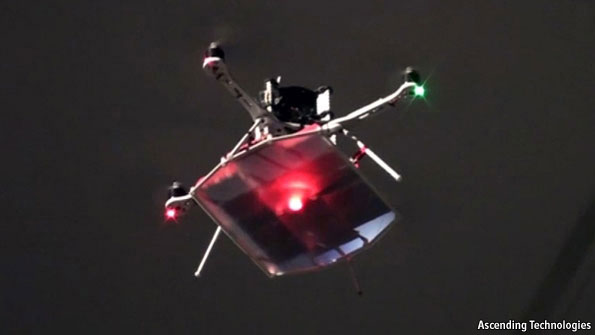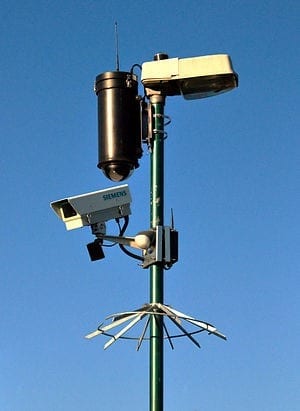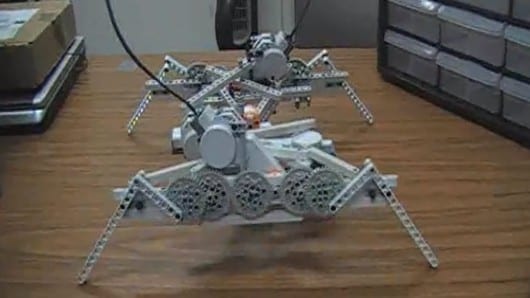THE Pelican, a small, remotely controlled helicopter drone weighing less than a kilogram, is powered by a battery that provides about 20 minutes’ flying.
And yet, one evening last October, the Pelican took off, rose ten metres and hovered throughout the night. It was brought down in the morning only because the exhibition hall near Seattle where it was airborne was about to open for business.
This remarkable feat was achieved with the ingenious use of a laser beam. The laser, aimed continuously from the ground at photovoltaic cells on the Pelican’s underside, charged the chopper’s battery, keeping her aloft for an unprecedented 12 hours and 27 minutes. An optical-tracking system kept the laser beam on target, creating a “scientifically exciting, yet a little boring” experience, according to Michael Achtelik, an operator from the Pelican’s German manufacturer, Ascending Technologies, after a long night monitoring flight data.
Keeping drones aloft is not the only putative application of power beaming, as this technology is known. Five years ago NASA, America’s space agency, offered prize money to any team that could build a remotely powered robot able to climb quickly up a cable. Only in 2009, however, were the first of these prizes claimed, when three teams from America and Canada demonstrated climbing robots powered by lasers on the ground. LaserMotive, the Seattle company that designed the Pelican’s laser system, won $900,000 by powering a 5kg robot up almost a kilometre of cable dangling from a manned helicopter. LaserMotive’s beam, which uses enough electricity to light about 50 desk lamps, struck a photovoltaic panel on the robot, generating electricity that then turned a set of skateboard wheels which gripped the cable.











